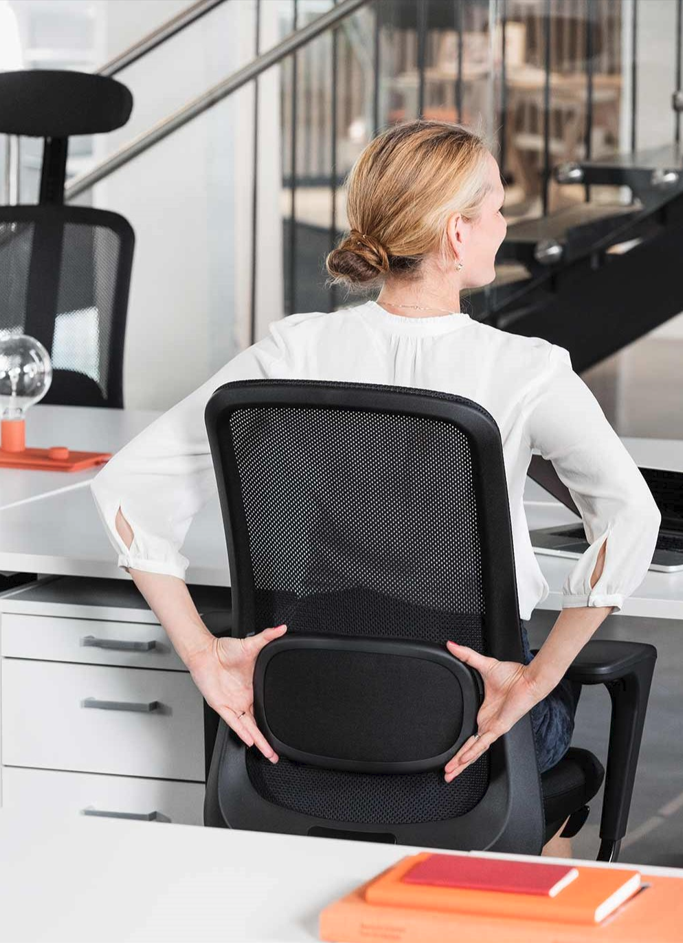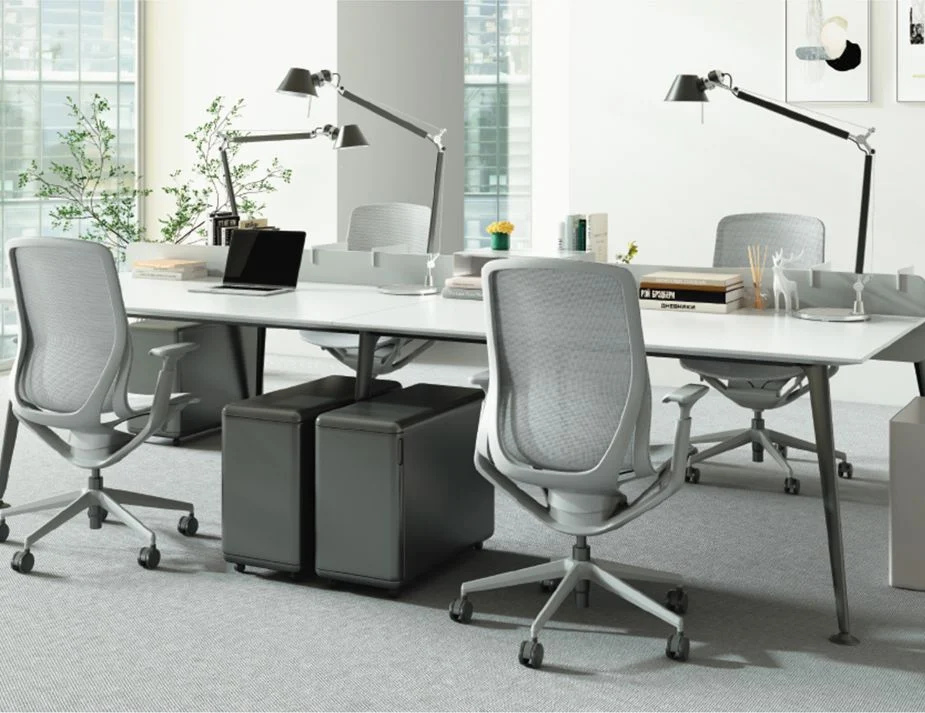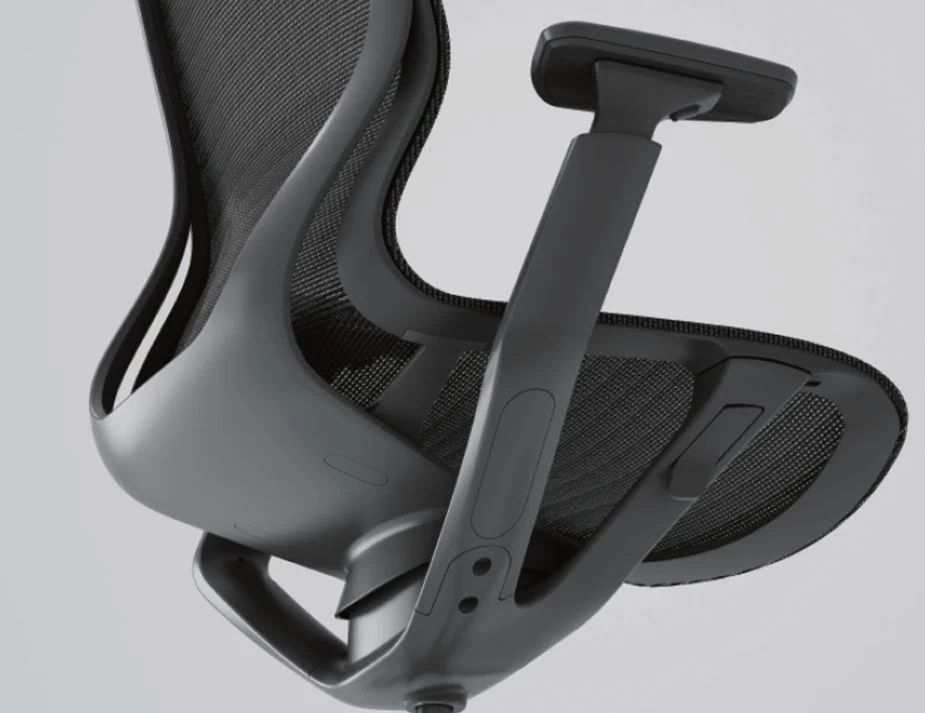
Lumbar Support and Office Furniture
Lumbar support is a critical aspect of comfort and spine health, especially in office spaces.
For interior designers and architects furnishing office projects, understanding lumbar support can enhance workplace well-being and productivity in your commercial projects.
The Importance of Lumbar Support in Commercial Spaces
Poor back support is a common cause of discomfort and posture problems. Prolonged sitting without adequate lumbar support can strain the lumbar spine, leading to significant issues. Research indicates that many individuals suffer from back problems due to inadequate support, highlighting the need for proper lumbar support in commercial furniture.
The consequences of inadequate lumbar support in the office workforce extend beyond physical discomfort. Employees experiencing back pain are likely to have reduced concentration and productivity. Chronic discomfort can lead to increased absenteeism, as workers may need to take time off to manage their pain or seek medical treatment.
Furthermore, a workforce plagued by back issues can suffer from lower morale, as persistent pain can negatively impact overall job satisfaction and well-being.
Lumbar Support Demystified: Your Backbone to Comfort
Simply put, it’s a feature in chairs and other sitting arrangements that provides additional support to the lower back. The lumbar region, the lower part of your spine, naturally curves inward. Proper support helps maintain this curve, crucial for spine health. By understanding the anatomy of your lower back and the mechanics of lumbar support, you can make informed choices that contribute significantly to your overall comfort and spine alignment. Let’s dive deeper and explore how the support works its magic on your back.

Supportive Ergonomic Chairs to Improve the Office Spaces
When you’re selecting furniture for your commercial projects, understanding the differences in lumbar support across various seating options is crucial. Ergonomic office chairs, designed for long hours at a desk, often feature adjustable lumbar support that aligns with the spine’s natural curve, preventing back strain during extended work sessions. These chairs are ideal for the commercial office environments you design.
In contrast, car seats provide back support tailored to maintain posture and comfort during long drives, reducing lower back fatigue a common issue for frequent drivers. However, your focus should be on selecting chairs that provide consistent support throughout a workday in an office setting.
A quality ergonomic chair should contour to the natural inward curve of the lower back, evenly distributing weight and maintaining proper spinal alignment. The firmness and position of the support are critical; too soft, and it lacks support; too hard, and it becomes uncomfortable.
Ergonomic lumbar support is more than a trend; it represents a thoughtful approach to chair design that prioritises spinal health. Features like height adjustability, depth control, and material selection contribute to a supportive sitting experience. This meticulous design can significantly enhance overall comfort and health, particularly for those spending much of their day seated. In commercial office spaces, the right back support can transform the sitting experience, improving posture, reducing back pain, and boosting well-being.
By incorporating ergonomic office furniture in your projects, you not only enhance the aesthetics but also ensure that the spaces you design promote health and productivity. By choosing quality ergonomic chairs, you provide your clients with furniture that supports employee well-being and boosts overall workplace efficiency.

How an Office Chair with Lumbar Support Preserves Your Spine’s Natural Curve

Understanding how an office chair with lumbar support works is simple yet vital. By fitting snugly against your lower back, the support prevents detrimental slouching that strains your spine. This not only alleviates back pain but also boosts overall health and productivity. Recognising these mechanics is key to appreciating the real value of back support in your daily life.
Choosing the Right Supportive Office Chair
Selecting the right office chair is crucial for ensuring proper lumbar support. Look for chairs that offer effective support to your lower back. But here’s the twist: adjustable versus fixed lumbar support. Each has its benefits and downsides.
- Adjustable Lumbar Support: Offers customisation to fit your unique spine shape and preferences. You can adjust the height, depth, and firmness to find the perfect fit.
- Fixed Lumbar Support: Provides consistent support without the need for adjustments. It is designed to fit a standard range of body types and may be more straightforward to use.
Quick Tip for Testing a Chair
When testing a chair, sit down, lean back, and see if the support aligns well with your lumbar curve. You should feel the support fitting snugly against your lower back, maintaining the natural inward curve of your spine. If it feels right, your back will thank you.
For interior designers and architects, choosing the right supportive office chairs for your commercial projects can make a significant difference in workplace comfort and productivity. By prioritising ergonomic design, you ensure that your clients’ spaces are both functional and health-promoting.
Pair your Office Chairs with an Ergonomic Desk Setup
When selecting office furniture for your commercial projects, it’s essential to consider the entire ergonomic setup, not just the chairs. An ergonomic desk setup is the perfect complement to an ergonomic office chair, ensuring a holistic approach to workplace comfort and productivity.
Adjustable Desks
Standing desks or sit-stand desks are invaluable additions to any office environment. They allow users to alternate between sitting and standing throughout the day, reducing prolonged pressure on the lower back. This flexibility promotes better posture, decreases the risk of musculoskeletal issues, and can enhance overall energy levels and productivity. For interior designers and architects, incorporating adjustable desks into your office projects can provide a modern, versatile solution that meets the diverse needs of today’s workforce.
Monitor Stands
Ensuring that monitors are at eye level is crucial for preventing slouching and neck strain. Adjustable monitor stands enable users to position their screens at the ideal height, promoting a neutral head position and reducing the tendency to hunch forward. This adjustment is vital for maintaining a healthy posture throughout the workday. When purchasing office furniture for your projects, including adjustable monitor stands can significantly enhance the ergonomic benefits of the workspace, complementing the support provided by ergonomic office chairs.
By integrating adjustable desks and monitor stands into your office designs, you create a cohesive ergonomic environment that supports the well-being and productivity of office workers. These elements, combined with quality ergonomic chairs, form the foundation of a comfortable, efficient workspace that caters to the physical needs of employees, helping to reduce discomfort and increase job satisfaction.

Ready to enhance comfort and productivity in your commercial spaces?
Contact Level Furniture Solutions at Level.com.au to explore our range of ergonomic office chairs designed for maximum support. Make an appointment today and let us help you create healthier, more comfortable office environments.
Feel free to share your thoughts or questions in the comments below. Don’t forget to subscribe for more insights and tips on commercial furniture and ergonomics!
Frequently Asked Questions
Colour impacts design for commercial furniture projects by affecting the overall aesthetic, functionality, and emotional response of the space. In commercial settings, colours can influence customer behavior, enhance brand recognition, and improve employee well-being. Thoughtful colour choices can transform a commercial space into an inviting and productive environment.
Colour impacts design for commercial furniture projects by affecting the overall aesthetic, functionality, and emotional response of the space. In commercial settings, colours can influence customer behavior, enhance brand recognition, and improve employee well-being. Thoughtful colour choices can transform a commercial space into an inviting and productive environment.
Yes, poor lumbar support can significantly affect productivity. Inadequate support can lead to discomfort, back pain, and poor posture, which can distract employees and reduce their ability to focus on tasks. Chronic discomfort may also lead to increased absenteeism and lower morale, further impacting productivity. Providing proper lumbar support through ergonomic office chairs helps ensure that employees remain comfortable, focused, and productive throughout the workday.
Colour impacts design for commercial furniture projects by affecting the overall aesthetic, functionality, and emotional response of the space. In commercial settings, colours can influence customer behavior, enhance brand recognition, and improve employee well-being. Thoughtful colour choices can transform a commercial space into an inviting and productive environment.
Colour impacts design for commercial furniture projects by affecting the overall aesthetic, functionality, and emotional response of the space. In commercial settings, colours can influence customer behavior, enhance brand recognition, and improve employee well-being. Thoughtful colour choices can transform a commercial space into an inviting and productive environment.
